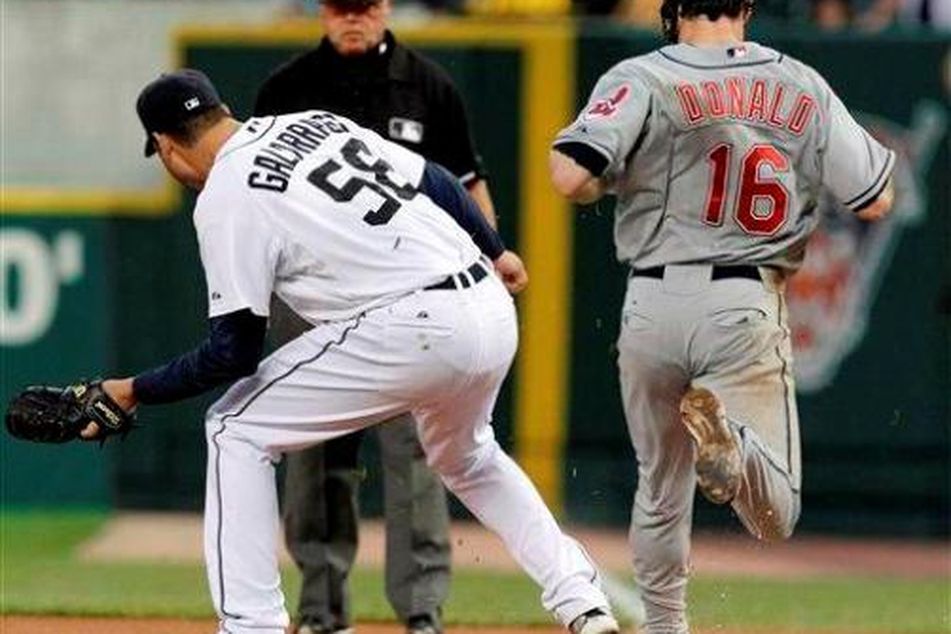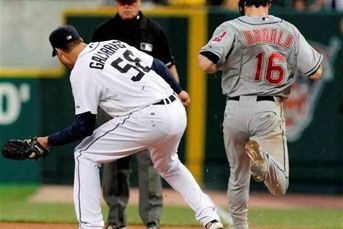Moneyball: Perfect games offer crucial lesson for investors
 Bad calls are part of the game; so too, are changes in historical norms (AP Images)
Bad calls are part of the game; so too, are changes in historical norms (AP Images)
Halladay. Braden. Galarraga. The recent spate of perfect (and near-perfect) games may be more than coincidence -- a fact that should have investors rethinking their views on how the market works. A stretch? Hardly.
To baseball fans, the perfect game hurled by Roy Halladay of the Philadelphia Phillies last week was a moment to savor. For financial mavens, it was a reminder of the unpredictable nature of markets.
Halladay was the 20th pitcher in history to record a perfect game — to set down all 27 batters in order. Fans were stunned because Halladay’s gem occurred only three weeks after the 19th perfect game, by Dallas Braden of the Oakland Athletics. Except for a bad call by an umpire in a game two days ago, Armando Galarraga of the Detroit Tigers would have recorded the third perfect game of the season.
Like investing, baseball is a game of averages — perhaps that is why Americans are addicted to both. Every pitch and swing of the bat, like every blip in the market, is a recordable act, fodder for statisticians. And the cumulative results of many games and seasons seem to obey an unseen arithmetic law.
Hitters never (or not since Ted Williams, in 1941) hit as high as .400. And over the course of a season, most players — though plagued by slumps and blessed with hot streaks — end up hitting close to their career averages.
Traders call this reversion to the mean, or the tendency of corporate earnings, or credit spreads, or bankruptcy ratios, to return to their historic norms. If either finance or baseball were that easy, of course, we would all be millionaires and they could cancel the World Series. But both pastimes routinely confound expectations. Some markets blow up; some players depart from the seeming statistical odds.
Unknowable Odds
I say seeming odds, because we really don’t know what the odds are of getting a base hit. All we know is that in the past, hitters have done it a bit more than 25 percent of the time, with averages in recent decades tending slightly higher.
And that is the second way in which both baseball and markets surprise us: over time, statistical norms change. The stolen base once was as common as the home run; no more. Reversion to the mean failed. A computer would deduce that since the average player makes an out two of every three plate appearances, the odds of a “perfect inning” are about 30 percent. That works out to a perfect game about once every 50,000 contests. At that rate, in the era of the 154-game season, baseball could have expected two perfect games over 80 years.
Instead, it saw two in five days, both in June 1880, notched by Worcester and Providence. Baseball defied the computer in part because of individual talent (not all pitchers are “average”).
The chance for perfection clearly rises when an ace is on the mound, thus, Cy Young, Jim Bunning, Sandy Koufax, Jim “Catfish” Hunter and Dennis Martinez, all stars, and Halladay — the best pitcher working today — are among the fabled 20.
Matter of Luck
Luck is also involved. Don Larsen, who threw a perfect game in the 1956 World Series, had a losing record over all.
Actually, pitchers have been perfect over nine innings 22 times. The official count doesn’t include Harvey Haddix of the Pittsburgh Pirates, who retired 36 batters in a row in 1959, only to lose his bid for perfection when the third baseman committed an error in the 13th inning. Similarly, Pedro Martinez’s bid was spoiled by a base hit in the 10th inning of a game in 1995.
The market equivalent of individual talent is “fundamentals” — the distinctions that render some corporations more likely to prosper than others, some borrowers more likely to default. This is a serious problem for rating companies, banking regulators and others who attempt to apply group probabilities to single events.
Outlier Events
Nor, even, will the averages over an entire season necessarily mimic those of the past. The mortgages underwritten in the mid-2000s, juiced by permissive underwriting, are equivalent to a season in which every player was wielding a corked bat. Judging from their likelihood to default, borrowers were on steroids. In either field, outlier events, such as market crashes, occur more often than the computer would predict.
Computers assume not perfect skill but perfect randomness. Life is different. One strikeout can lead to another: a batter returns to the dugout shaking his head at the missed fastball, leading his mates to doubt their chances. Inning by inning they grow more anxious, like traders who start selling after a succession of losing days, precipitating a rout.
The most inexplicable fact about perfect games is that, over the past generation, they have been happening more often. In the 100 years through 1980, there were nine perfect games, less than one per decade. Since then, pitchers have thrown 11 more, better than one every third year. Perfect games were once black swans, as infrequent as severe financial panics. Now they are becoming commonplace.
Changing Dynamics
Come to think of it, the same is true of financial crises. Have we, in either arena, merely experienced a spate of bizarre luck — an unusual drawing from nature’s urn? Or have the internal dynamics of the games changed, so that once-unlikely results will be the norm?
Perhaps the modern ballplayer, built for power more than contact, is less able to squeeze out a late- inning hit when needed. Perhaps financial institutions are so conditioned to depend on the market’s judgment — or on the government’s willingness to prop it up that — when either fails, they have less room for error, more propensity to panic.
Our financial architecture is based on our supposed ability to forecast; every time an investor speaks of risk-weighted returns, he or she presupposes knowledge of what the risks really are. The odds against 27 straight outs are no longer what they were; what of the odds of a run of bad financial luck? Those who mechanically rely on a historical pattern take the biggest risk of all.
(Roger Lowenstein, author of the just-published “The End Wall Street,” is a Bloomberg News columnist. The opinions expressed are his own.)
Learn more about reprints and licensing for this article.




